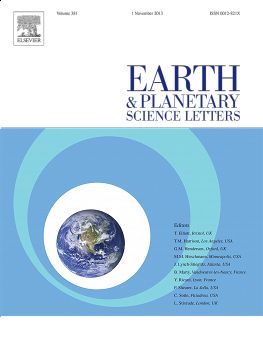Ma et al., 2010
Regolith production rates calculated with uranium-series isotopes at Susquehanna/Shale Hills Critical Zone Observatory.
Ma, L., Chabaux, F., Pelt, E., Blaes, E., Jin, L., and Brantley, S.L. (2010)
Earth and Planetary Science Letters vol 297, 211-225.
-
Shale Hills, INVESTIGATOR, COLLABORATOR
-
Shale Hills, INVESTIGATOR, COLLABORATOR
-
National, Eel, Luquillo, Shale Hills, INVESTIGATOR, COLLABORATOR
Abstract
In the Critical Zone where rocks and life interact, bedrock equilibrates to Earth surface conditions, transforming to regolith. The factors that control the rates and mechanisms of formation of regolith, defined here as material that can be augered, are still not fully understood. To quantify regolith formation rates on shale lithology, we measured uranium-series (U-series) isotopes (238U, 234U, and 230Th) in three weathering profiles along a planar hillslope at the Susquehanna/Shale Hills Observatory (SSHO) in central Pennsylvania. All regolith samples show significant U-series disequilibrium: (234U/238U) and (230Th/238U) activity ratios range from 0.934 to 1.072 and from 0.903 to 1.096, respectively. These values display depth trends that are consistent with fractionation of U-series isotopes during chemical weathering and element transport, i.e., the relative mobility decreases in the order 234U > 238U > 230Th. The activity ratios observed in the regolith samples are explained by i) loss of U-series isotopes during water–rock interactions and ii) re-deposition of U-series isotopes downslope. Loss of U and Th initiates in the meter-thick zone of “bedrock” that cannot be augered but that nonetheless consists of up to 40% clay/silt/sand inferred to have lost K, Mg, Al, and Fe. Apparent equivalent regolith production rates calculated with these isotopes for these profiles decrease exponentially from 45 m/Myr to 17 m/Myr, with increasing regolith thickness from the ridge top to the valley floor. With increasing distance from the ridge top toward the valley, apparent equivalent regolith residence times increase from 7 kyr to 40 kyr. Given that the SSHO experienced peri-glacial climate ∼ 15 kyr ago and has a catchment-wide averaged erosion rate of ∼ 15 m/Myr as inferred from cosmogenic 10Be, we conclude that the hillslope retains regolith formed before the peri-glacial period and is not at geomorphologic steady state. Both chemical weathering reactions of clay minerals and translocation of fine particles/colloids are shown to contribute to mass loss of U and Th from the regolith, consistent with major element data at SSHO. This research documents a case study where U-series isotopes are used to constrain the time scales of chemical weathering and regolith production rates. Regolith production rates at the SSHO should be useful as a reference value for future work at other weathering localities.
Citation
Ma, L., Chabaux, F., Pelt, E., Blaes, E., Jin, L., and Brantley, S.L. (2010): Regolith production rates calculated with uranium-series isotopes at Susquehanna/Shale Hills Critical Zone Observatory. Earth and Planetary Science Letters vol 297, 211-225.. DOI: 10.1016/j.epsl.2010.06.022
 This Paper/Book acknowledges NSF CZO grant support.
This Paper/Book acknowledges NSF CZO grant support.
Explore Further




